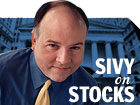|
The biggest risk
|
 |
December 24, 2001: 1:38 p.m. ET
Few investors are prepared for the danger that inflation will revive over the coming decade.
By Michael Sivy
|
NEW YORK (CNN/Money) - Investors generally try to protect their stock portfolios against foreseeable threats. But there's one danger that most investors ignore -- the likelihood that inflation will revive at some point during the coming decade. The Federal Reserve's 11 interest rate cuts this year -- to the lowest level in 40 years -- could easily translate into inflation. The current recession will prevent that from happening in 2002. But once the economy recovers, excess liquidity will begin pushing consumer prices up, risking the start of a new inflation cycle.
There's an additional inflation risk as well. Global oil supplies are one of the few external factors significant enough to affect the U.S. economy. And oil prices will likely move up from recent levels of less than $20 a barrel. Saudi Arabia and Iraq alone account for one-third of the world's oil reserves. So there's always a risk that conflict in the Middle East could interrupt the oil supply and send the price soaring. But even if peace prevails, oil prices are likely to creep higher. The recession has currently depressed energy demand. But industry analysts calculate that the cost of oil would be at least $26 a barrel in a normal economy with stronger demand. And because energy -- in the form of transportation, heating and the like -- figures in the costs of most goods and services, any rise in the oil price will help to fuel inflation.
Take inflation into account
I'm not suggesting that double-digit increases in consumer prices are inevitable or that higher inflation is right around the corner. But long-term investors should give some thought to including inflation hedges in their portfolios. Richard C. Young writes a newsletter I've always liked that's aimed at conservative investors (for more info, go to www.intelligencereport.com). And in the current issue, he profiles a number of stocks tied to natural resources. Here are the ones I find most promising.
The largest publicly traded oil company, Exxon Mobil looks like a very solid value for conservative investors. At $39, the share price is down 14 percent from its high this summer. Analysts project that earnings will grow at a 9 percent compound annual rate, and the stock currently yields almost 2.4 percent. Even at the current oil price, Exxon stock offers a respectable total return and would appreciate significantly if the oil price rises.
Integrated companies such as Exxon have refining and marketing operations that protect them when oil prices are depressed but also prevent them from feeling the full force of higher prices. Independent oil and gas producers, by contrast, offer much greater upside opportunities. Among the largest and most attractive independents are Anadarko Petroleum at $53.80 a share, Apache at $52.30 and Burlington Resources at $37. All three trade at less than 12 times estimated earnings for 2001. The stocks are currently so cheap because profits are projected to fall sharply in 2002 and remain down until the oil price recovers.
Raw materials ready for a rebound
Many other raw materials producers are in the same boat, including Phelps Dodge, one of the world's largest copper producers. At $31 a share, Phelps Dodge is close to its lowest level in a decade. The company is currently losing money and will likely lose money in 2002. But earnings aren't the best measure of the company's financial position -- cash flow should top $5 a share next year. And profits will rebound once the economic recovery begins. Following the 1990-91 recession, Phelps Dodge stock more than doubled.
Finally, investors who want income or an investment suitable for a tax-deferred account such as an IRA should consider Plum Creek Timber. Following its October merger with The Timber Company, Plum Creek became the second-largest private timberland owner in the United States (after International Paper). The company is organized as a real estate investment trust that distributes most of its cash flow. At $28 a share, Plum Creek yields 8.2 percent. Analysts expect cash flow to rise slightly in 2002, but it could really take off in an overheated economy. That's something investors won't have to worry about for a couple of years, but it's smart to start picking up inflation hedges while they're out of favor.
Sign up to receive Sivy on Stocks by e-mail every Monday, Wednesday and Friday. 
|
|
|
|
|
|

|

